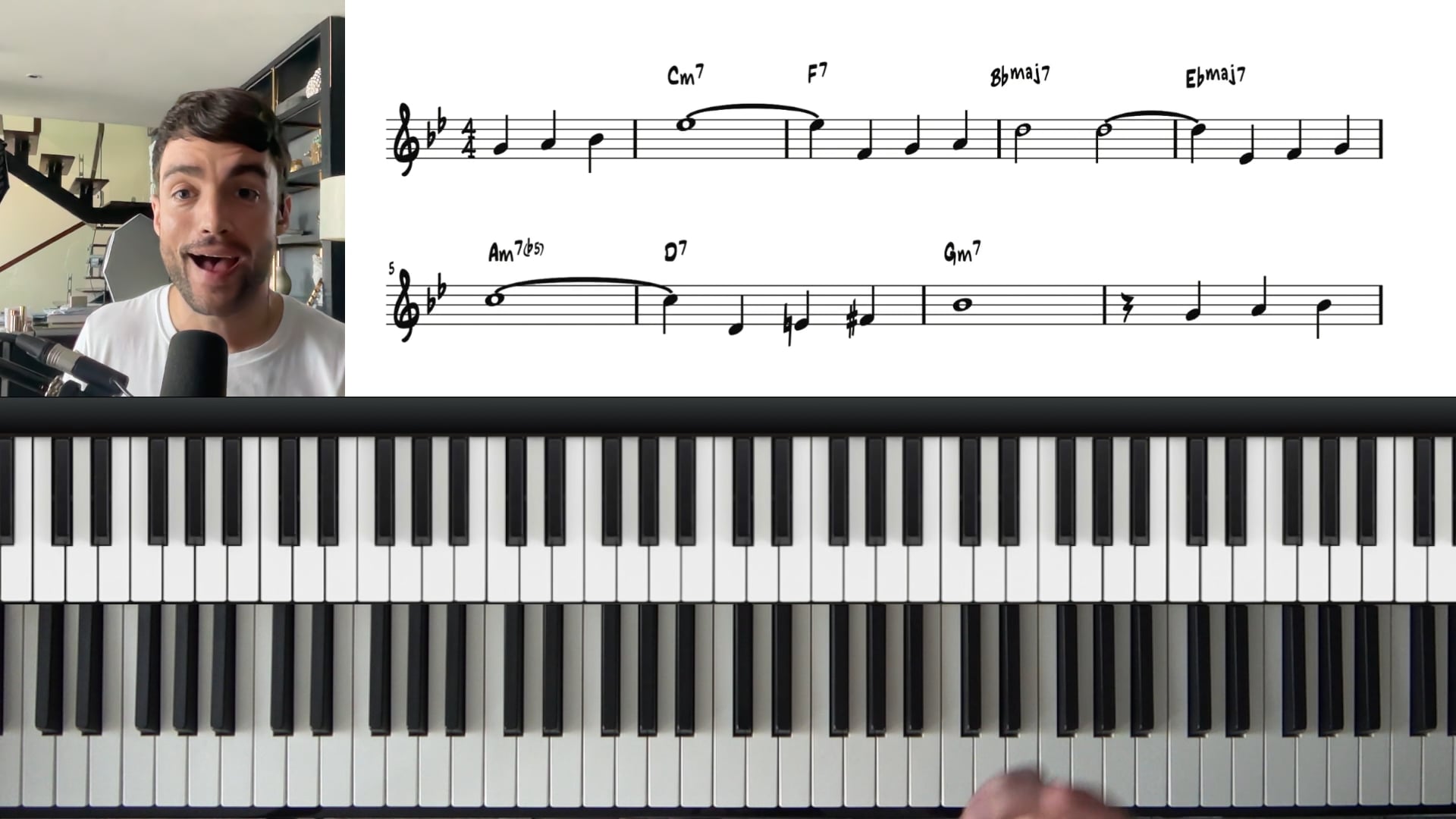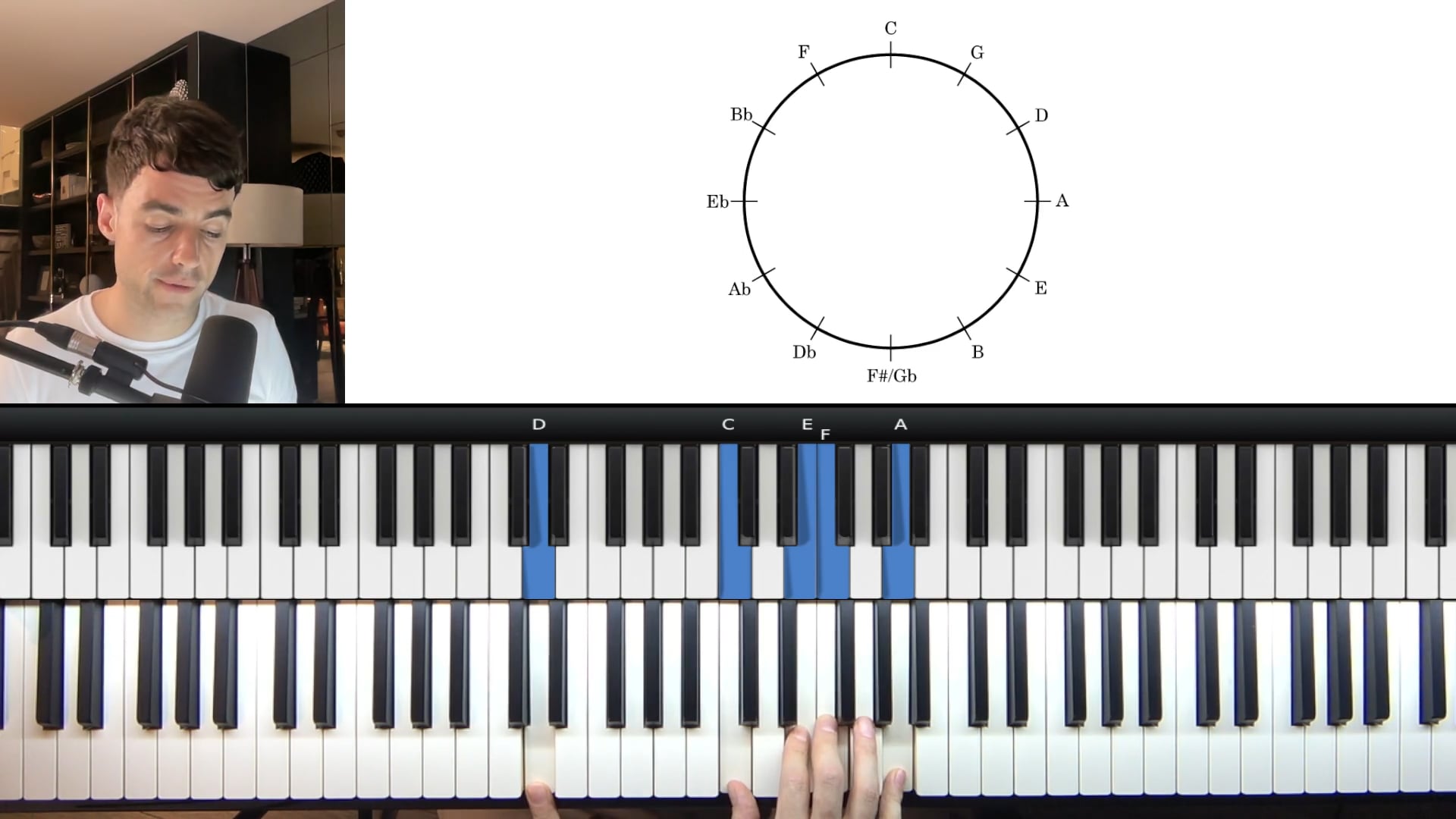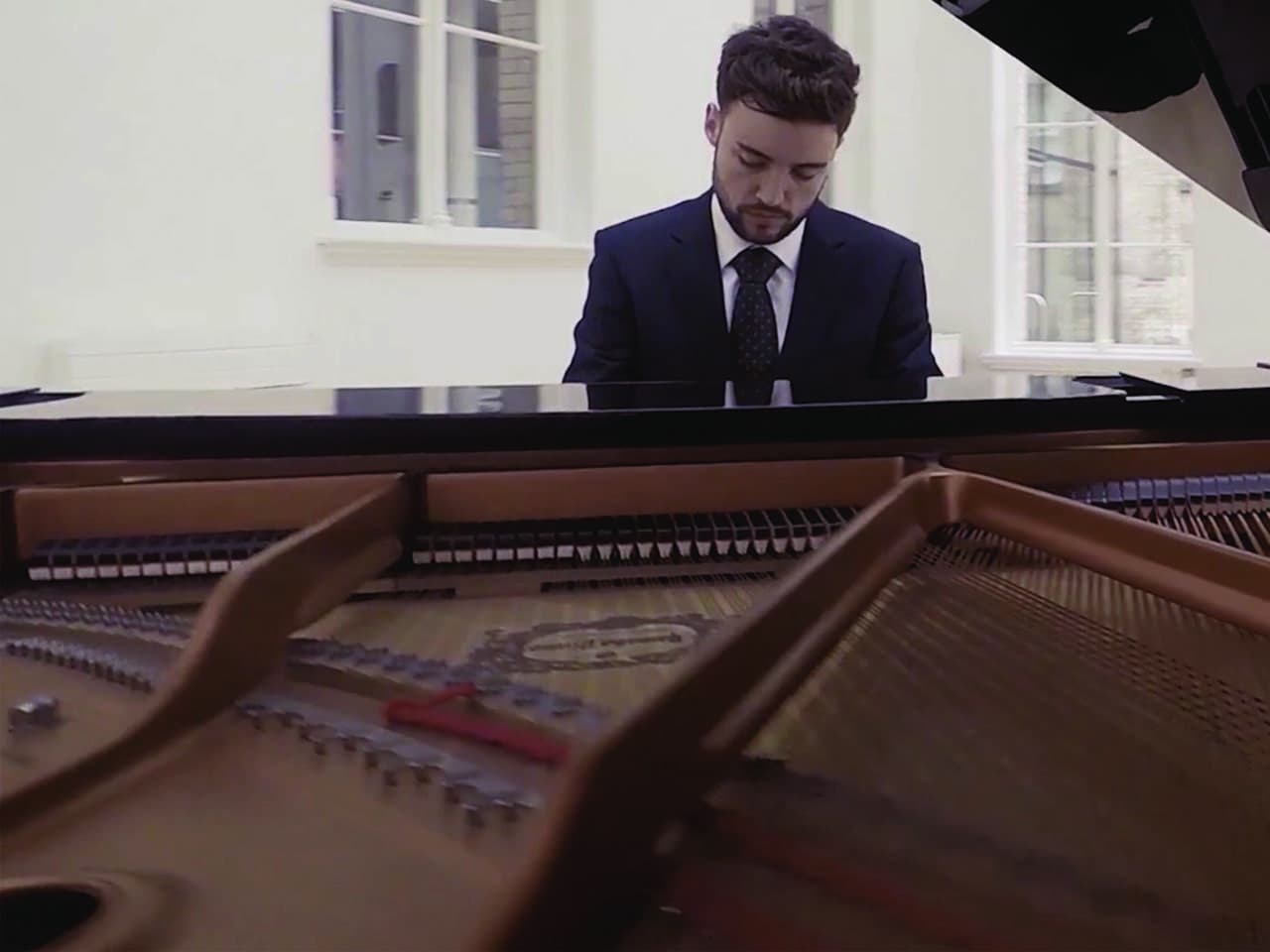

Hayden Hill
Hayden founded PianoGroove in 2015 with the goal of making the world a more musical place. He shares his love for jazz piano through his online courses and manages the community area of PianoGroove.
Live Seminar Resources
Live Seminar Resources
PDF Downloads
- Autumn Leaves - Chord Chart
Join PianoGroove Pro to access all downloads and learning resources.
Download theory supplements, midi files, chord changes and full note-for-note transcriptions of every lesson.
- You Don't Know What Love Is - Chord Chart
Join PianoGroove Pro to access all downloads and learning resources.
Download theory supplements, midi files, chord changes and full note-for-note transcriptions of every lesson.
- Corcovado - Chord Chart
Join PianoGroove Pro to access all downloads and learning resources.
Download theory supplements, midi files, chord changes and full note-for-note transcriptions of every lesson.
- Embraceable You - Chord Chart
Join PianoGroove Pro to access all downloads and learning resources.
Download theory supplements, midi files, chord changes and full note-for-note transcriptions of every lesson.
Related Lessons
Seminar Description
Seminar Description
Exploring Inner Voice Movement in Jazz Piano
Welcome to this seminar on inner voice movement, a powerful technique to add depth, character, and fluidity to your jazz piano playing. Inner voice movement refers to subtle shifts within a chord structure that create smooth transitions and rich harmonic textures.
In this lesson, we will analyze inner voice movement through four jazz standards:
- "Autumn Leaves"
- "You Don’t Know What Love Is"
- "Corcovado"
- "Embraceable You"
Each piece presents unique applications of this concept, from simple voice-leading techniques to more sophisticated harmonic embellishments.
Understanding Inner Voice Movement
Inner voices are the notes that move within a chord voicing of chord progression, often while the melody note remains static. These movements enhance harmonic motion and can be used to connect chords and chord progressions together with interesting internal movements.
A very basic example of inner voice movement is a 2-5-1 progression where the 7th of the ii chord resolves a half step down to the 3rd of the V chord. The 7th of the V chord then resolves a half step down to the 3rd of the I chord.
Expanding on this basic concept, we explore chromatic inner voices, suspended chords, and descending or ascending inner lines to add richness and additional movement to our chord progressions.
Inner Voice Techniques in "Autumn Leaves"
"Autumn Leaves" serves as an introductory piece for applying inner voice movement. We begin with a 251 progression in Bb Major, focusing on how the 7th of C-7 falls to the 3rd of F7 and then the 7th of F7 falls to the 3rd of Bbmaj7. We then enhance this basic movement with the following techniques:
- Adding a b9 to the dominant chord F7 by creating an inner voice from the 5th of C-7 that moves chromatically downward to target the b9 of the F7 chord.
- Using 10th intervals in the left hand to provide a stable harmonic foundation while freeing the right hand for inner voice movement and targeting the ‘color tones’.
- We also explore how adjusting the 5th of major chords can introduce subtle inner voice motion within our voicings at the point of resolution in the chord progression.
Expanding Inner Voice Use in "You Don’t Know What Love Is"
This ballad demonstrates how inner voices can be explicitly written into chord symbols. A key feature of this song is the F-7 to F-maj7 movement, where the minor 7th of the chord moves up chromatically to the major 7th.
Other techniques include:
- Inner voice movement under static melody notes, allowing the harmony to create movement and interest underneath a sustained melodic tones.
- Descending chromatic lines within a dominant chord, often targeting the b9s and #9s and adding tension before resolution.
- Again utilizing 5 to #5 to 6 movement over major chords to create harmonic interest at the point of resolution.
Advanced Inner Voice Application in "Corcovado"
Antonio Carlos Jobim’s "Corcovado" is a bossa nova masterpiece filled with intricate inner voice motion. This piece highlights:
- Minor 7 to minor-major 7 movements, which add a lush and expressive element to the harmony.
- Dominant 13th chords with altered extensions, where chromatic passing tones within the chord create interesting moving lines.
- Harmonic motion within the same chord structure, where subtle inner voice shifts prevent harmonic stagnation.
A signature technique is the E7(13-#9) to A7(#5b9) progression, where the melody remains static while the inner voices descend chromatically.
Practice Tips
- Identify static melody notes – Inner voices work well when the melody is held, allowing for harmonic movement beneath.
- Experiment with chromatic passing tones – Moving inner voices by a half step adds subtle tension and resolution.
- Use inner voice movement in progressions – Memorise the formulas for inner voices in 251 progressions. See the course on ‘whole step 251 drills’ for more information.
- Apply inner voices in both hands – Playing the movement in both hands creates a fuller, more connected sound.
- Analyze recordings of great jazz pianists – Listen to Bill Evans and Antonio Carlos Jobim to hear these techniques in action.
Final Thoughts
Mastering inner voice movement enhances your ability to create compelling and fluid jazz piano arrangements. Whether you’re working with simple voice-leading techniques or advanced chromatic alterations, incorporating inner voices will add expressiveness and sophistication to your playing.
Be sure to check out the related lessons and PDF resources for detailed transcriptions and exercises. Happy practicing, and enjoy discovering the depth of inner voice movement in jazz piano!






Hayden…just love these sessions…they turn the 5 minute Master Classes into Master Sessions! Great work!
Hey Celia 👋🏻
I’m glad you enjoyed the session. It’s a fun topic to plan and present.
Let me know if you have any ideas for future seminar topics. I was thinking my next seminar could be an “Ask Me Anything” format to start the new year and help students with any questions they may have.
Cheers,
Hayden
@Hi Hayden
This is such a great live session, my vocing confusion is getting out of the cloud slowley and step by step. You have done a great work, and I think your teaching methodology and explanations of complex topics are amazing. A real strength.
Keep going.
Thanks Prisca – it’s great to hear your comments.
Inner voice movement is a lovely area to study and something that I have a lot of fun with.
I’m looking forward to my next live seminar later this month. If you have any topics that you would like me to cover just let me know.
Cheers!
Hayden
Hi, I find this extremely interesting to start to work on systematically! Is it possible that you Hayden could make a cheat sheet with the suggestions for inner voice movement that you mention in the seminar, and possibly other possibilities also? If there isn’t a document already somewhere, but i don’t find any?
And a more specific question, why do one speak of only 3 minor chords, for example Cmmaj7, Cm7 and Cm6? Why not Cmb6 also? You could for instance then easily and logically connect it in a minor 251, where the b6 in the minor tonic chord would become the b5 in the 2 and the b2 in the dominant chord?
Hi Fredrik.
Yes I can certainly create a cheat sheet for this – leave that with me. In fact I have created a new course which covers different inner voice options over dominant chords. The course will be launched early next week so keep your eyes pealed in the forum.
For your second question, there are a potentially infinite number of ways to add inner voices and connect our chords. The Cmmaj7, Cm7, to Cm6 example if one of the easiest to visualise and also one of the most practical in terms of when and where it can be applied. I would recommend mastering this movement in all 12 keys so that it can be easy visualised, and then explore additional inner voices like the one you mention here.
Let me know if I can help further and look out for my new course next week.
Cheers,
Hayden
With respect to the pedal and its use or non use during inner voice movement. Are you primarily holding some notes while using inner voice movement so as not to blurr the harmony(not referring to chord change pedal) or taking some quick pedal action? Perry
Hi Perry,
Great question.
Yes that is correct, I release the sustain pedal so that I don’t blur the inner voice lines together. If the sustain pedal is held down, the inner voices would sound very dissonant as most often they are just a half step apart (chromatic movement).
It is possible to play the major and minor chord inner voices that follow the line 5 –> #5 –> 6 (and other variations) without the sustain pedal, as we keep the other notes held down. You can experiment with and without and see what works best for you.
I hope that helps and talk soon!
Cheers,
Hayden
Continuing, It looks like and sounding like you’re holding some notes in both hands with pedal up while using inner voice movement. Is that correct?
Yes this technique works well with the major and minor chord inner voices that move from 5 to #5 to 6, and also 5 to 7 to b7 to 6.